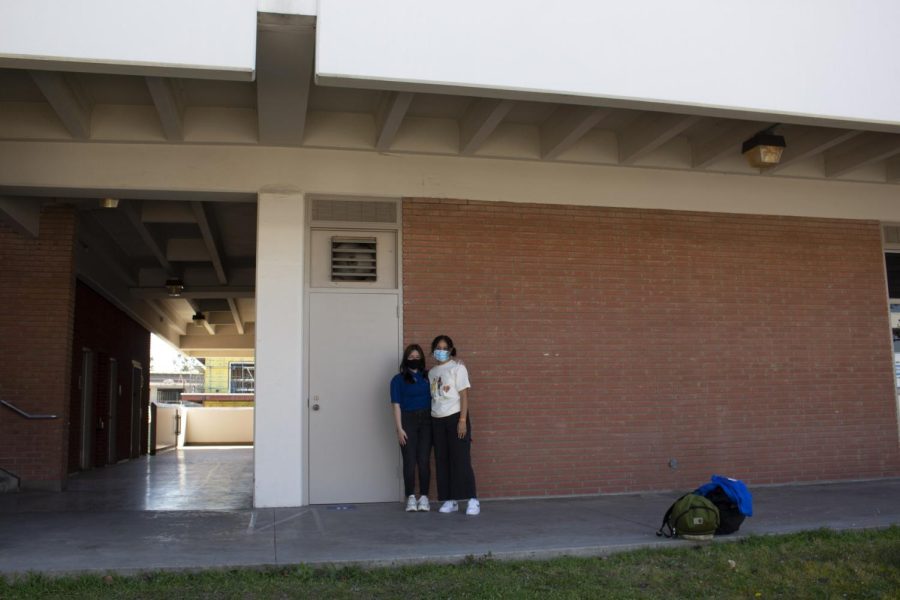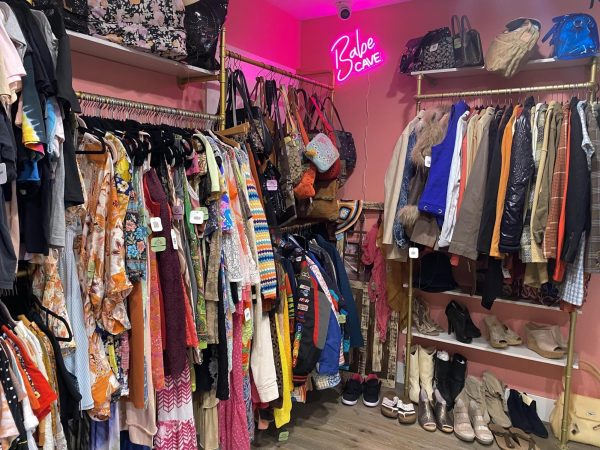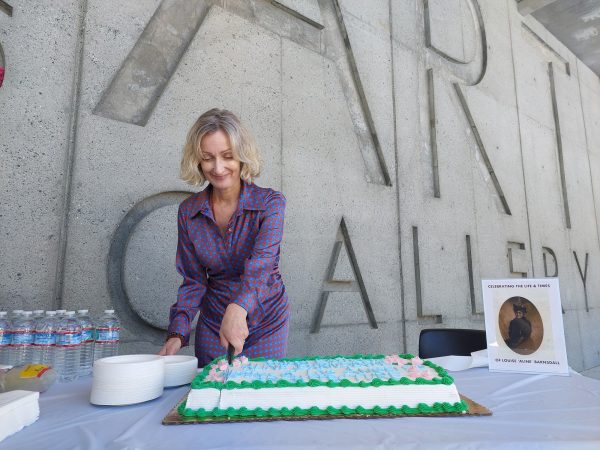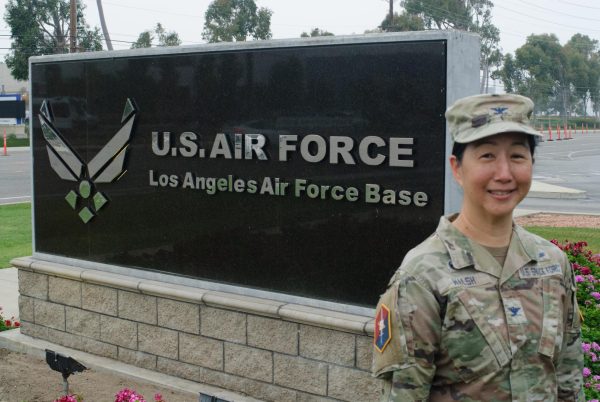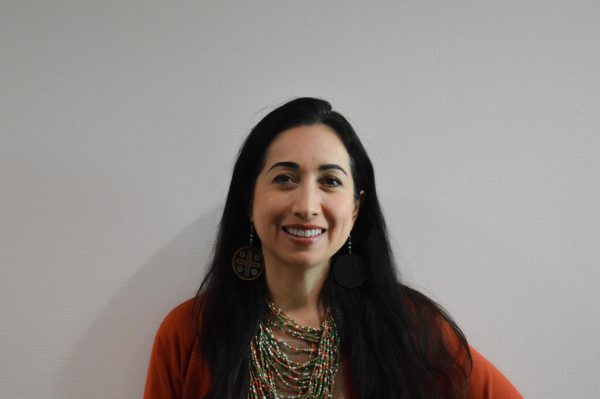Upcoming Social Justice Center and Black Student Success Center aim to uplift Black student youth
Associated Student Organization members Andrea Fernandez Cruz, 19, and Fine Tuitupou, 20, stand in front of what will be the future site of the Social Justice Center at ECC on Feb. 28, 2022. The Social Justice Center is not due to open until fall 2022. Photo by Delfino Camacho/The Union.
Dozens of El Camino College students gathered around the Students Services Plaza eager to grab a plate and learn more about the Black Student Union. The club held an “eat-and-greet” event Tuesday, Feb. 22 in honor of Black History Month.
Offering a mix of traditional African dishes and soul food options, the Black Student Union (BSU), in collaboration with the Student Equity Advisory Council (SEAC), hosted the event to attract student involvement and to highlight the need for more Black-centric programs.
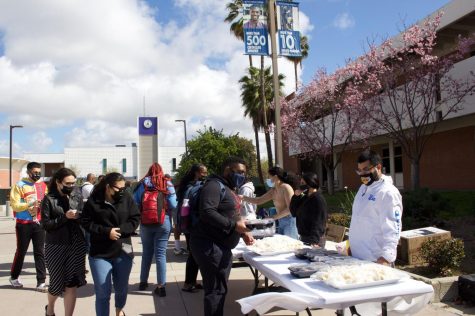
Past events such as the virtual open-mic night that celebrates Black culture at El Camino College (ECC) were conducted by organizations that help uplift Black student youth, organizations such as the Black Student Union, the Student Equity Advisory Council, the Associated Students Organization and the African American Employees Network.
One of the most essential projects from the combined efforts of these organizations is the creation of two new student outreach centers that will provide services on campus starting this fall semester: the Social Justice Center and the Black Student Success Center.
According to the Associated Students Organization (ASO) director of equity, diversity and inclusion Fine Tuitupou, both centers work toward achieving equity on campus. The Social Justice Center is meant to be a destination for all underrepresented student groups, while the Black Student Success Center is focused on academically supporting Black students.
Tuitupou has worked alongside other student activists and faculty supporters to make these two centers a reality.
“These two programs arose because student leaders wanted them,” Board of Trustees Vice President Trisha Murakawa said. “I believe this was a student-driven campaign with partnerships, of course, with the staff to make it happen.”
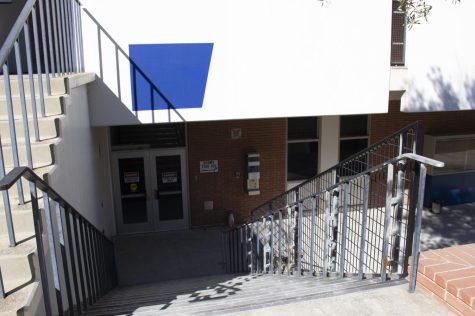
Plans on creating a space like the Social Justice Center on campus have been in talks for years, but it wasn’t until early 2020 that former El Camino student and ASO President Giancarlo Fernandez began working in earnest to make the center a reality.
“He [Giancarlo] needs to get huge credit for making the Social Justice Center happen,” Murakawa said.
Ross Miyashiro, 62, is vice president of Student Services at El Camino and was one of the leading faculty members assisting students with the creation of both the Social Justice and Black Student Success Centers.
“It was a partnership. I worked with the executive committee directly and Giancarlo worked with the students directly,” Miyashiro said. “Giancarlo interviewed students and asked what they wanted out of a Social Justice Center, and that’s what I took to advocate for the content and the programming of the center itself.”
Fernandez, who is now enrolled at Berkeley, stayed at El Camino for an extra year to establish the Social Justice Center. Wanting to leave a lasting legacy that would give back, Fernandez’s efforts indirectly led to the creation of a second center, the Black Student Success Center.
“I knew that successfully implementing the Social Justice Center would create more opportunities for more tailored resource centers, like the Black Student Success Center,” Fernandez said. “Once you have that foundation it’s easier to create subsets of other centers because there’s that foundation.”
With the formation of the Social Justice Center, Fernandez’s student activist successors like twin brothers Safy and Koby Tesfay, and current ASO president Dalyan Johnston, 19, took the reigns and began planning the Black Student Success Center.
“In our meetings, one of the things we really wanted to focus on was developing programs to specifically help Black students with retention and transfer rates,” Safy Tesfay said.

Safy Tesfay is the current BSU President, while his brother Koby Tesfay serves as the student lead for the Black Student Success Center.
“Ross [Miyashiro] had mentioned that he had this idea for a Black center, but he needed students to help, you know, incite it and craft it, so I took on that role,” Koby Tesfay said.
Johnston said that Miyashiro was the one who started pushing for the Black Student Success Center to be made.
Miyashiro said that while talks about a center tailored for Black youth were already in development, the racially charged protests and demonstrations following examples of police misconduct against Black Americans during 2020 played a role in inciting Miyashiro and others into action.
“After the murder of George Floyd I met with Black and African American students and I met with AFAM and I asked them what would they see in a Black student center,” Miyashiro said.
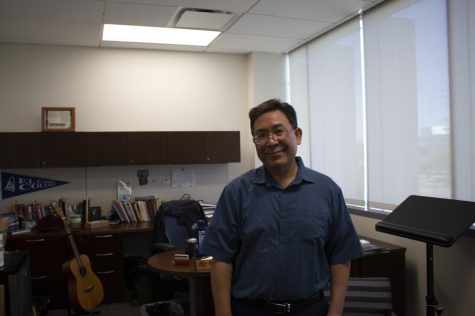
The collective response from the center’s organizers on why creating a center tailored to uplifting Black youth remains a necessity is all the same: retention, transfer and success rates for El Camino College’s Black students need improvement.
“We track data here at El Camino that reflects student success and if that data shows that there are needs we can provide at ECC then we have to find a way to make it happen,” Murakawa said.
Enrollment rates for Black students have steadily decreased for the past three years. According to the Community College Chancellors Office data mart, from the 2018 to 2019 school year, Black student enrollment numbers were 4,818, decreasing further to 4,595 from 2019 to 2020 and settling at 4,246 for 2020 to 2021.
“So when you have statistics like this you have to wonder how can we change this, where does the problem lie, and what can we do next?” Koby Tesfay said.
Student and faculty organizers held focus groups and looked at data points to figure out how best to aid Black students and help raise performance levels. The solution is to eliminate equity gaps among Black students by creating educational programs to address educational issues in Black communities.
“At ECC, African American students make up 14% of our population, so we have a large population of students that are hungry to learn, hungry to succeed and it’s our moral and ethical responsibility to make sure everyone has the same opportunity,” Miyashiro said.
The two new centers will work together, each center addressing different systemic issues. The Social Justice Center, while not exclusive to Black students, focuses on raising equity and helping students who might be underperforming because they are distracted by non-academic challenges.
ASO student trustee Karina Ramirez said that the Social Justice Center would be a place where disparities could be addressed and solved. The center would guide students to new and pre-existing programs that aid with necessities such as money for textbooks, transportation and nutrition.
“It’s hard to learn if you don’t have your basic needs met,” Miyashiro said. “If we erase those equity gaps all other metrics like success, transfer and completion will also increase.”
With economic and cultural disparity being addressed by the Social Justice Center, the Black Student Success Center has a more narrow focus on fostering Black student success through assistance offerings such as tutoring and mentorship programs.
While minor issues like furniture and construction have the two physical centers slated for a fall 2022 opening, the programs themselves are “set in stone”, Murakawa said.
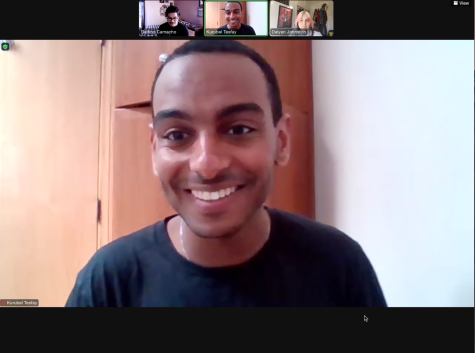
Koby Tesfay and Associated Student Organization President Johnston said that when the spaces officially open in the fall semester, students who want to utilize the services offered only need to step inside and ask.
“One of the ultimate outcomes of centers like this is to build generational wealth and rebuild educational gaps,” Fernandez said.
Like former student Fernandez had done, the Tesfay brothers and current ASO President Johnston are working as faculty lead for both centers. Faculty coordinators Keina Daniels, who will serve as coordinator for the Black Student Success Center, and Monica Delgado will coordinate for the Social Justice Center.
Both centers are funded by a state-sponsored chancellor’s office program called the Student Equity and Achievement Program.

“We had other funding sources and those fell through and they [Student Equity and Achievement Program] stepped up and said you know what, we’ll bypass other programs and we’ll fund this program,” Miyashiro said. “It’s been a lot of planning, a lot of meetings.”
While the Social Justice Center will be open from mid to late April according to the Academic Senate March 1 agenda, a preview of the center is scheduled for March 26, in conjunction with a unity walk taking place on campus the same day.
“I would have benefited from a center like the Black Student Success Center,” Koby Tesfay said. “If we don’t address the needs of our student population, then that’s a failure on the school.”


